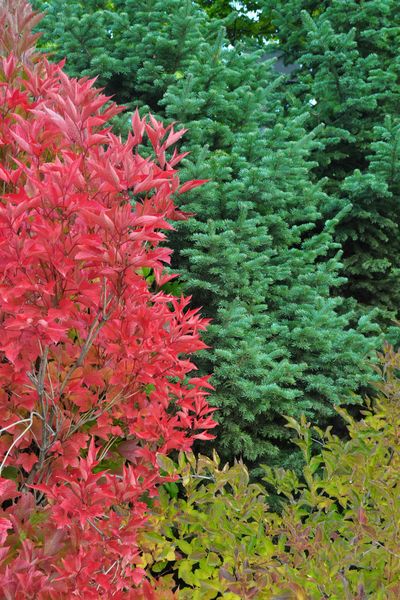Colors of fall can help you find a perfect tree

As luck would have it last week I had to travel up to Republic, Wash., in Ferry County for work.
All along the road through the Colville Valley and over Sherman Pass, the aspen and cottonwood were glorious shades of gold while the grasses were glowing in a dozen shades of gold and tan. The tamaracks were just beginning to turn into blazing candles on the mountain sides. I wanted to bring them all home. Hmm, with a little planning, maybe I can.
Fall is the perfect time to look for new trees for the yard. Most nurseries are clearing their stock so you might be able to get some good bargains. The cooler weather means trees can be planted without the heat stress found earlier in the year. The roots will still have several weeks of warmer soil temperatures to get established before the tree goes completely dormant.
Do some site analysis in your yard before you head to the nursery. Carefully measure the spaces you want to plant trees in. You don’t want to buy something that will outgrow its space in a few years. How far away (measure it) are roof eaves, other buildings or the neighbor’s fence? Look up; are there utility lines overhead? If so don’t plan on putting a tall tree there; you or the utility company will end up pruning it later to get it out of the wires.
What are the growing conditions where you want the tree? How much shade or sun does the area get and at what times of the day? Does the site tend to be wet or dry and how will you get water to the tree? Lastly, what do you want the tree to do besides be colorful in the fall? Do you want a small or large tree; one that creates shade or has flowers, fruit and/or wildlife food and shelter?
Look around town right now for trees with good color. If you find one you don’t know, gather a few leaves or take a picture of it and make a visit to the Finch Arboretum off the Sunset Highway in west Spokane. The arboretum is home to hundreds of deciduous and conifer trees you can see in their natural growth habits. Best of all, most of them are labeled so you may be able to identify your unknown leaves.
Properly planting the tree will ensure you can enjoy it for years. Dig a wide, dish shaped hole twice as wide and as deep as the root ball. Remove any pots, wire, burlap or string from the root ball. Set the tree in the hole so that the point where the trunk flares out to form the roots is at the soil level. Resist the urge to amend the original soil with amendments like compost or fertilizer before you backfill the hole. Tamp the soil around the roots gently, build a low moat of soil to hold water and water the tree deeply and thoroughly.